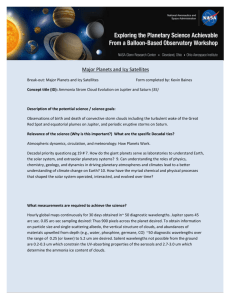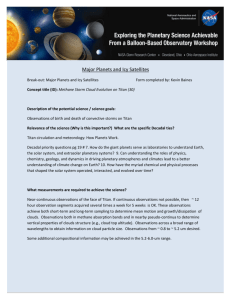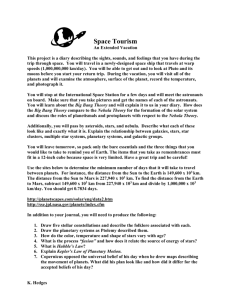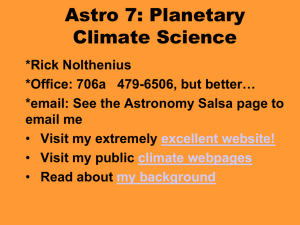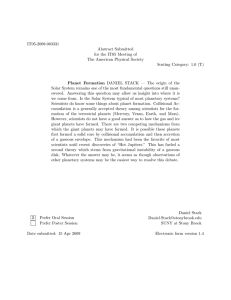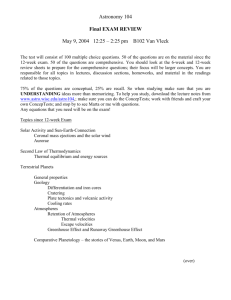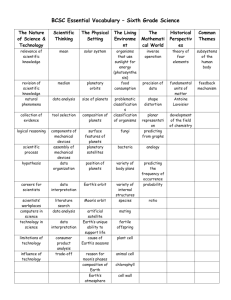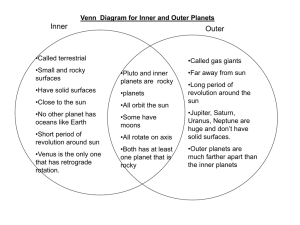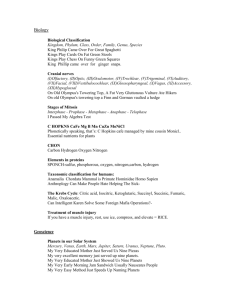Mapping Waves and Dynamics on Giant Planets
advertisement
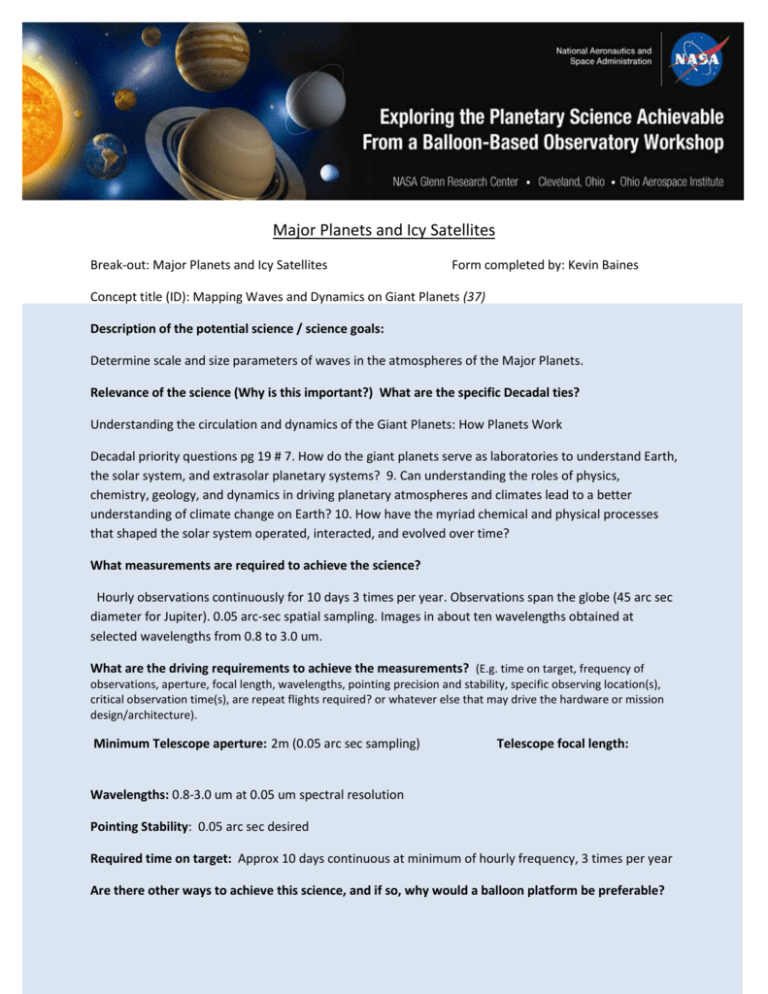
Major Planets and Icy Satellites Break-out: Major Planets and Icy Satellites Form completed by: Kevin Baines Concept title (ID): Mapping Waves and Dynamics on Giant Planets (37) Description of the potential science / science goals: Determine scale and size parameters of waves in the atmospheres of the Major Planets. Relevance of the science (Why is this important?) What are the specific Decadal ties? Understanding the circulation and dynamics of the Giant Planets: How Planets Work Decadal priority questions pg 19 # 7. How do the giant planets serve as laboratories to understand Earth, the solar system, and extrasolar planetary systems? 9. Can understanding the roles of physics, chemistry, geology, and dynamics in driving planetary atmospheres and climates lead to a better understanding of climate change on Earth? 10. How have the myriad chemical and physical processes that shaped the solar system operated, interacted, and evolved over time? What measurements are required to achieve the science? Hourly observations continuously for 10 days 3 times per year. Observations span the globe (45 arc sec diameter for Jupiter). 0.05 arc-sec spatial sampling. Images in about ten wavelengths obtained at selected wavelengths from 0.8 to 3.0 um. What are the driving requirements to achieve the measurements? (E.g. time on target, frequency of observations, aperture, focal length, wavelengths, pointing precision and stability, specific observing location(s), critical observation time(s), are repeat flights required? or whatever else that may drive the hardware or mission design/architecture). Minimum Telescope aperture: 2m (0.05 arc sec sampling) Telescope focal length: Wavelengths: 0.8-3.0 um at 0.05 um spectral resolution Pointing Stability: 0.05 arc sec desired Required time on target: Approx 10 days continuous at minimum of hourly frequency, 3 times per year Are there other ways to achieve this science, and if so, why would a balloon platform be preferable? No. Save for spacecraft, this is the only means to achieve continuous observations for more than about 8 hrs. What are the potential observation targets? Jupiter, Saturn, Uranus and Neptune What planetary science disciplines would this involve? Planetary Atmospheres: Circulation, dynamics Point of contact for follow-on questions (Name and contact info) Kevin Baines (blueskies4321@yahoo.com)
